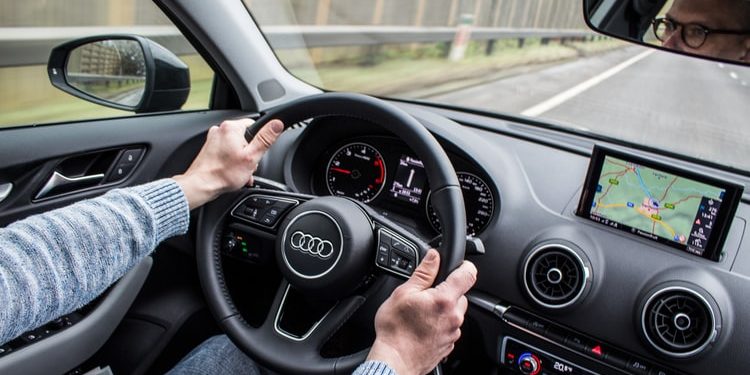Just as in other sectors, R&D teams have been hard at work improving the technologies that are commercially available for automobiles at the moment. Aside from cosmetics and what’s under the hood, the car buyers of today are looking at quality-of-life features and ergonomics when choosing their vehicle. Car buyers new and old would do well to take a look at what’s popping in the car tech industry, however, so here are our top three picks for the car technologies that improved the most in 2019.
360-Degree Cameras
Everyone from Nissan to Tesla has been thinking up ways to improve this technology for their automobiles. At its current state, however, the 360-degree camera has proved to be a mainstay in mid- to high-end cars, reducing the likelihood of low-speed crashes, which contrary to popular belief can still cause serious injury. Some drivers, especially inexperienced ones, can sometimes find it difficult to gauge whether they’re about to hit something. Paired with collision detectors, the 360-degree camera makes it virtually impossible to get into a low-speed crash.
The original concept consisted of just one camera on the roof of the car, offering a 360-degree view of the surroundings. Improved models, however, involve a system of cameras on every side of the vehicle. Their feeds are all put together by onboard imaging software to produce virtual top-down live footage of your car’s surroundings. Each camera can deliver their own individual feeds, however, making them great parking aids.
Vehicle Theft Tracking and Other Software Integrations
The total number of motor vehicles stolen in the US amounted to 748,000 in 2018. One would consider that quite a lot, but the percentage of those stolen vehicles that are recovered is steadily on the rise. This is all thanks to the recent advancements in vehicle tracking software, which is slowly getting incorporated into modern automobile designs. This, along with the other features on a car’s software suite, is considered such a vital factor in car quality that it comes up incredibly frequently on top-rated car reviews on reputable automobile sites.
New and improved vehicle theft tracking can pinpoint the position of a stolen vehicle anywhere in the world, accurate to the inch. Aside from precision, modern-day car security software improves upon itself by activating as soon as the car starts without being keyed. Otherwise, it sends a notification to the owner’s smartphone when it starts without the onboard computer having synced with it. Additional nifty upgrades to car software include accurate, easily understandable diagnostics, instant notification of rescue services in the event of a crash, and virtual concierge features.
Adaptive Cruise Control
It has been a bumpy ride for adaptive cruise control systems so far, but recent advancements have suggested a bright future for the technology. Market growth projections for the technology are looking good, and that can only bode well for its continued development. Massive improvements to built-in sensor arrays in cars have produced adaptive cruise control that can make your car’s speed sync up with the surrounding cars, eliminating the need to work the pedals manually on the highway.
Some of the newer systems even work the pedals themselves, braking and accelerating in accordance with the flow of traffic. This has made the stop-and-go traffic far easier to manage for drivers who’ve tested the vehicles, despite their initial lack of confidence in the feature itself. This new form of adaptive cruise control is perhaps the closest we’ve gotten to a hybrid self-driving car setup, and everyone who’s tested it out seems to love it. The Boston personal injury lawyers at DolmanLaw.com have a great page on brake checking, which is the process where a driver brakes suddenly in order to catch a driver off guard. This can lead to many serious accidents. Perhaps in the future technology will be able to handle situations like these.
Heads-Up Displays (HUDs)
At the turn of the millennium, digits projected on windshields were considered state-of-the-art for Heads-Up Displays. Those primitive HUD devices needed their own sensor devices hooked up to each of the vehicle’s systems and projected dark and blurry digits. In 2019, however, they’ve evolved to become powerhouse dashboard fixtures, capable of displaying fuel, speedometer, and even 3D map information on a glass screen or as a high-resolution windshield projection. The technology has gotten to a point that there are even solutions as cheap as $30 USD that offer nearly the same amount of information as the higher-end devices, albeit in a less elegant manner.
By far, the most popular iterations of this piece of auto tech have been portable dash mount HUDs and projected HUDs. The former is currently being spearheaded by Hudway in the form of the Hudway Drive and the more affordable Hudway Cast, each giving drivers vital information such as distance to the next turn and driving speed in a concise, easy-to-read package. Both devices also allow drivers to project their phone displays onto them, making it easier to access google maps, music, and other apps.
As for the projected variety, there is a wealth of models on the current market, seeing as it was the first variety to ever have been developed. Most of them hook up to the OBD2 Port, mainly used to read fault codes, to obtain their metrics and diagnostics.
With the state of the car tech industry today, one can expect the cars of tomorrow to be equipped with better features and gadgets than ever before. It won’t be long before we can expect the driving problems of today virtually eliminated by the momentum of modern research and development.


